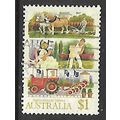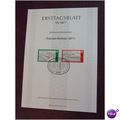Lettercard - Cheltenham, Gloucestershire - Queens Hotel - postcard c.1920s
- Condition : Used
- Dispatch : 2 Days
- Brand : None
- ID# : 183321527
- Quantity : 1 item
- Views : 115
- Location : United Kingdom

- Seller : justthebook (+1704)
- Barcode : None
- Start : Sun 14 Jul 2019 03:48:02 (EDT)
- Close : Run Until Sold
- Remain : Run Until Sold
Checks/Cheques
 for 1 item(s) edit
for 1 item(s) edit
Shipping Calculator
More Listings from This Seller view all
Seller's Description
- Lettercard
- Picture / Image: 2 page lettercard from the Queens Hotel, Cheltenham - back has multiview panels of views of Cheltenham
- Publisher: Photochrom Co. Ltd.
- Postally used: no
- Stamp: n/a
- Postmark(s): n/a
- Sent to: n/a
- Notes / condition:
Please ask if you need any other information and I will do the best I can to answer.
------------------------------------------------
Postage and packing charge should be showing for your location (contact if not sure).
UK - PayPal, Cheque (from UK bank) or postal order
I will give a full refund if you are not fully satisfied with the postcard.
----------------------------------------------
Cheltenham /ˈtʃɛltnəm/, also known as Cheltenham Spa, is a regency spa town and borough which is located on the edge of the Cotswolds, an Area of Outstanding Natural Beauty in Gloucestershire, England. With a motto of Salubritas et Erudito meaning 'health and education', Cheltenham has been a health and holiday spa town resort since the discovery of mineral springs in 1716 and has a high number of internationally renowned and historic schools.
The town hosts several festivals of culture, often featuring nationally and internationally famous contributors and attendees. The list of festivals includes: the Cheltenham Literature Festival, the Cheltenham Jazz Festival, the Cheltenham Science Festival, the Cheltenham Music Festival and the Cheltenham Food & Drink Festival.[1][2] As the home of the flagship race of British steeplechase horse racing, the Gold Cup is the main event of the Cheltenham Festival, held every March.
Cheltenham stands on the small River Chelt, which rises nearby at Dowdeswell and runs through the town on its way to the Severn.[3] It was first recorded in 803, as Celtan hom; the meaning has not been resolved with certainty, but latest scholarship concludes that the first element preserves a pre-British noun cilta, 'steep hill', here referring to the Cotswold scarp; the second element may mean 'settlement' or 'water-meadow'.[4] As a royal manor, it features in the earliest pages of the Gloucestershire section of Domesday Book[5] where it is named Chintenha[m]. The town was awarded a market charter in 1226.
Though little remains of its pre-spa history, Cheltenham has been a health and holiday spa town resort since the discovery of mineral springs there in 1716. Captain Henry Skillicorne (1678–1763), is credited with being the first entrepreneur to recognise the opportunity to exploit the mineral springs.[6] The retired "master mariner" became co-owner of the property containing Cheltenham's first mineral spring upon his 1732[7] marriage to Elizabeth Mason.[8] Her father, William Mason, had done little in his lifetime to promote the healing properties of the mineral water apart from limited advertising and building a small enclosure over the spring.[6] Skillicorne's wide travels as a merchant had prepared him to see the potential lying dormant on this inherited property. After moving to Cheltenham in 1738, he immediately began improvements intended to attract visitors to his spa. He built a pump to regulate the flow of water and erected an elaborate well-house complete with a ballroom and upstairs billiard room to entertain his customers. The beginnings of Cheltenham's famous tree-lined promenades and gardens surrounding its spas were first designed by Captain Skillicorne with the help of "wealthy and traveled" friends who understood the value of relaxing avenues. The beautiful walks and gardens were naturally adorned with sweeping vistas of the countryside. Soon the gentry and nobility from across the county were enticed to come and investigate the beneficial waters of Cheltenham's market town spa.[8]
The visit of George III with the queen and royal princesses in 1788 set a stamp of fashion on the spa.[9] The spa waters can still be sampled at the Pittville Pump Room, built for this purpose and completed in 1830;[10] it is a centrepiece of Pittville, a planned extension of Cheltenham to the north, undertaken by Joseph Pitt, who laid the first stone 4 May 1825.[11]
Cheltenham's success as a spa town is reflected in the railway station, which is still called Cheltenham Spa, and spa facilities in other towns that were inspired by or named after it.[12]
Alice Liddell and Lewis Carroll were regular visitors to a house in Cudnall Street, Charlton Kings – a suburb of Cheltenham. This house was owned by Alice Liddell's grandparents, and still contains the mirror, or looking glass, that was purportedly the inspiration for Lewis Carroll's novel Through the Looking-Glass, published in 1871.[13]
Horse racing began in Cheltenham in 1815, and became a major national attraction after the establishment of the Festival in 1902.[14] Whilst the volume of tourists visiting the spa has declined, the racecourse attracts tens of thousands of visitors to each day of the festival each year,[15] with such large numbers of visitors having a significant impact on the town.
In the Second World War, the United States Army Service of Supply,[16] European Theatre of Operations established its primary headquarters at Cheltenham under the direction of Lt. Gen. John C. H. Lee,[17] with the flats of the Cheltenham Racecourse[18] becoming a giant storage depot for countless trucks, jeeps, tanks and artillery pieces. Most of this materiel was reshipped to the continent for and after the D-Day invasion. Lee and his primary staff had offices and took residence at Thirlestaine Hall in Cheltenham.[19]
On 1 April 1974, under the Local Government Act 1972, the borough of Cheltenham was merged with Charlton Kings urban district to form the non-metropolitan district of Cheltenham. Four parishes—Swindon Village, Up Hatherley, Leckhampton and Prestbury—were added to the borough of Cheltenham from the borough of Tewkesbury in 1991.[20]
The first British jet aircraft prototype, the Gloster E.28/39, was manufactured in Cheltenham. Manufacturing started in Hucclecote near Gloucester, but was later moved to Regent Motors in Cheltenham High Street (now the Regent Arcade), considered a location safer from bombing during the Second World War.
Listing Information
| Listing Type | Gallery Listing |
| Listing ID# | 183321527 |
| Start Time | Sun 14 Jul 2019 03:48:02 (EDT) |
| Close Time | Run Until Sold |
| Starting Bid | Fixed Price (no bidding) |
| Item Condition | Used |
| Bids | 0 |
| Views | 115 |
| Dispatch Time | 2 Days |
| Quantity | 1 |
| Location | United Kingdom |
| Auto Extend | No |



















![Superman BBQ / Kitchen Apron [41654639]](https://pic.ebid.net/upload_small/9/8/7/1445651565-29739-4.jpg)